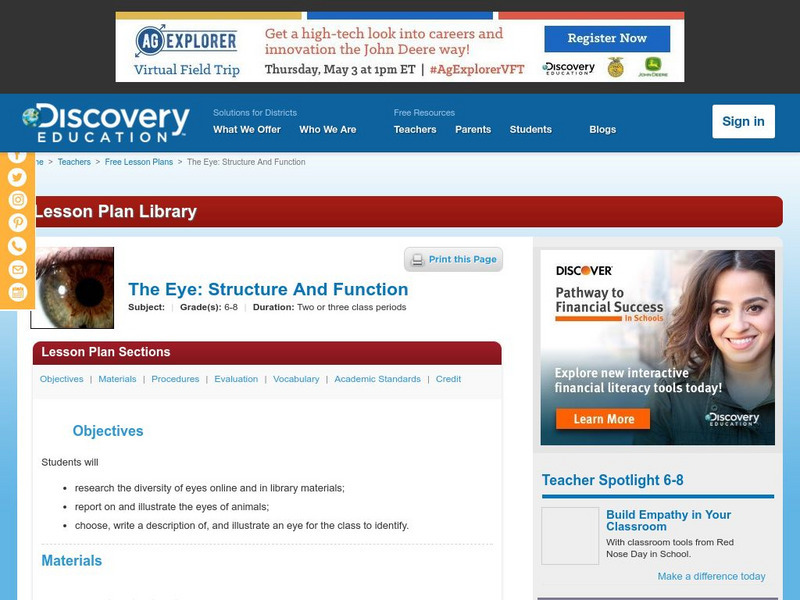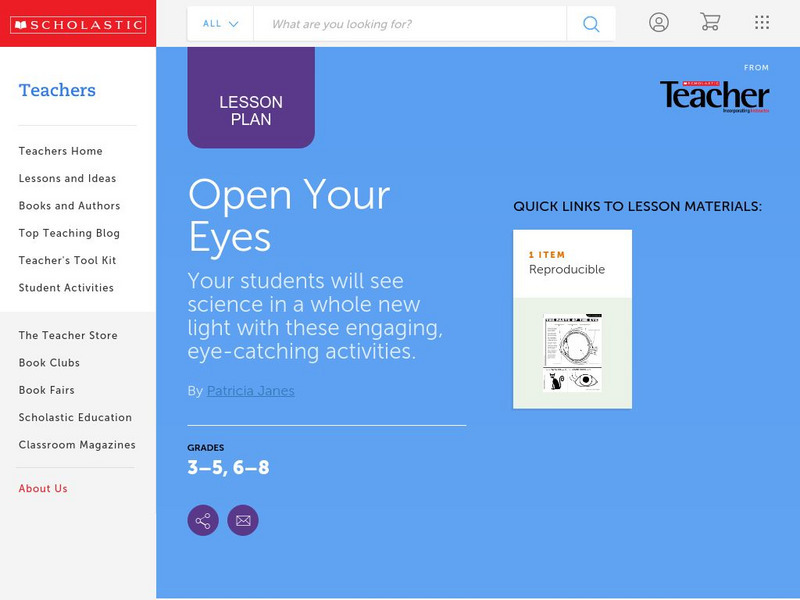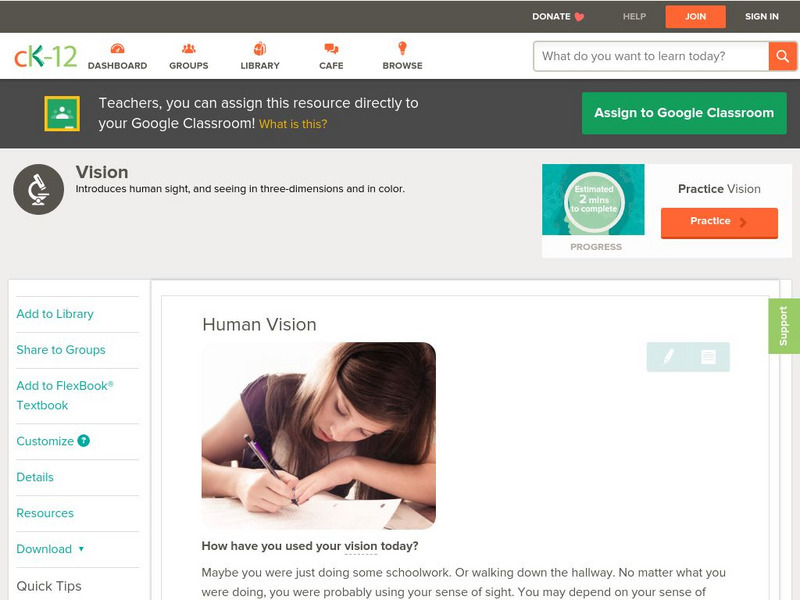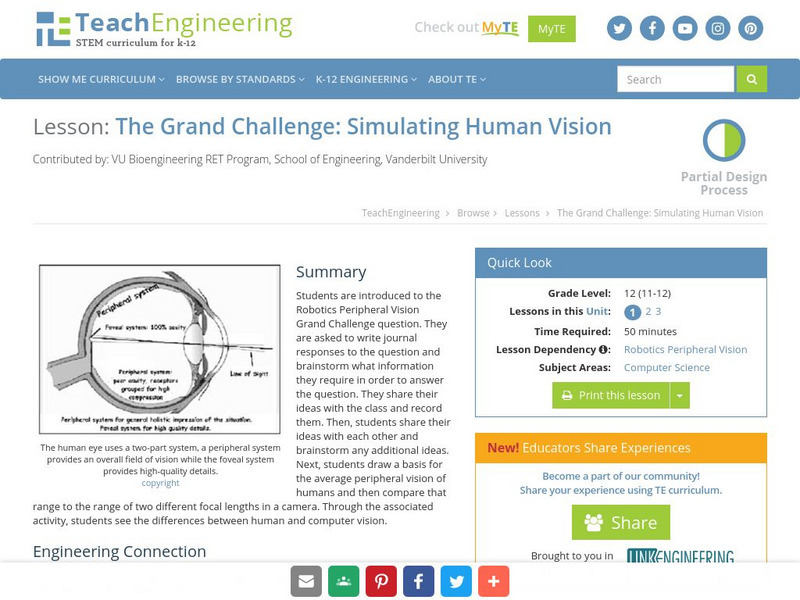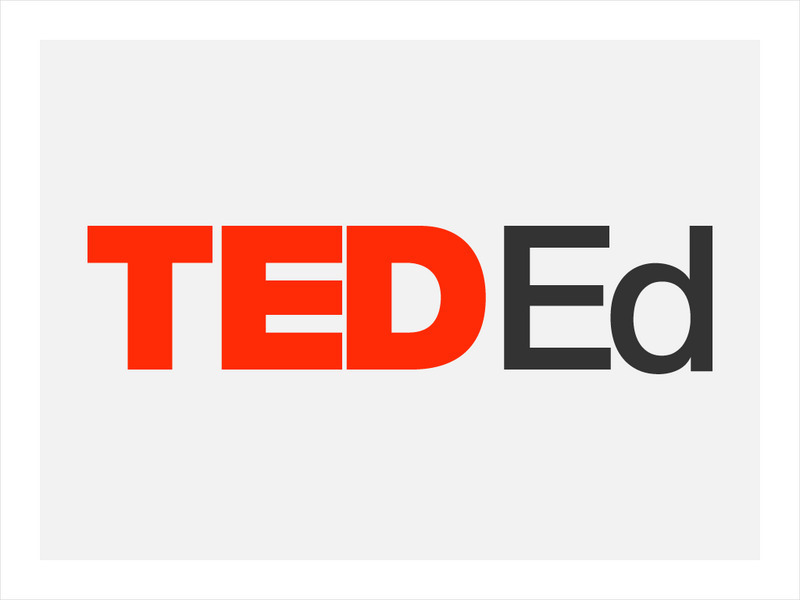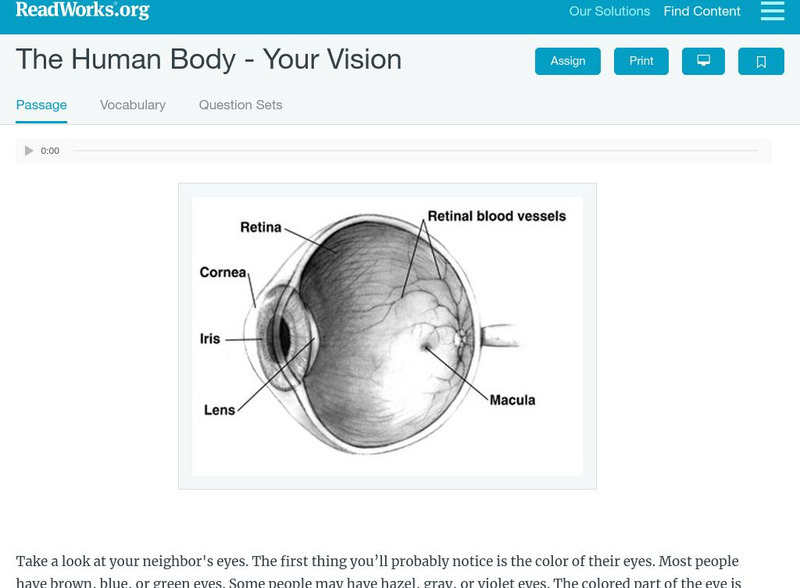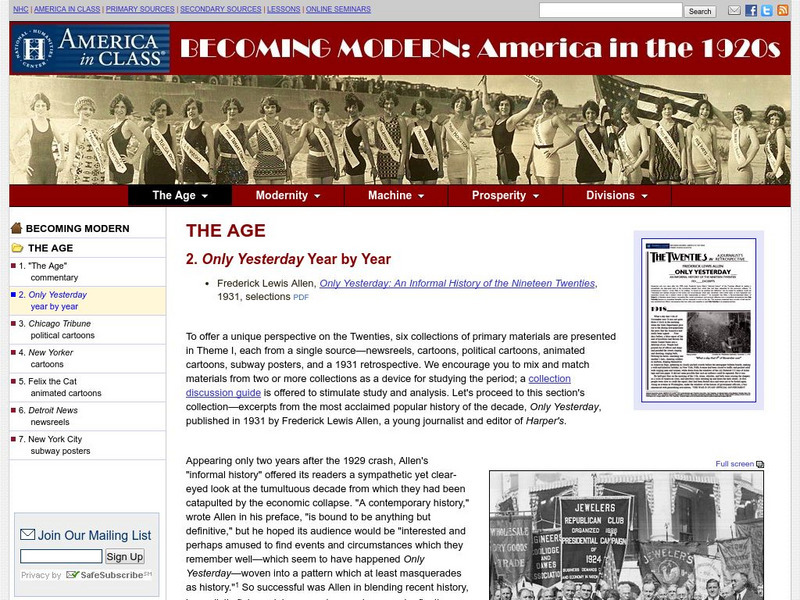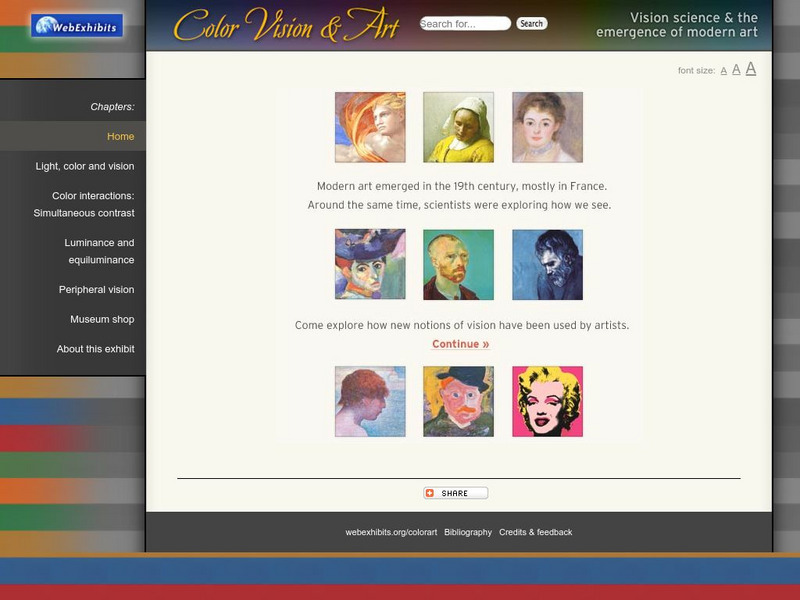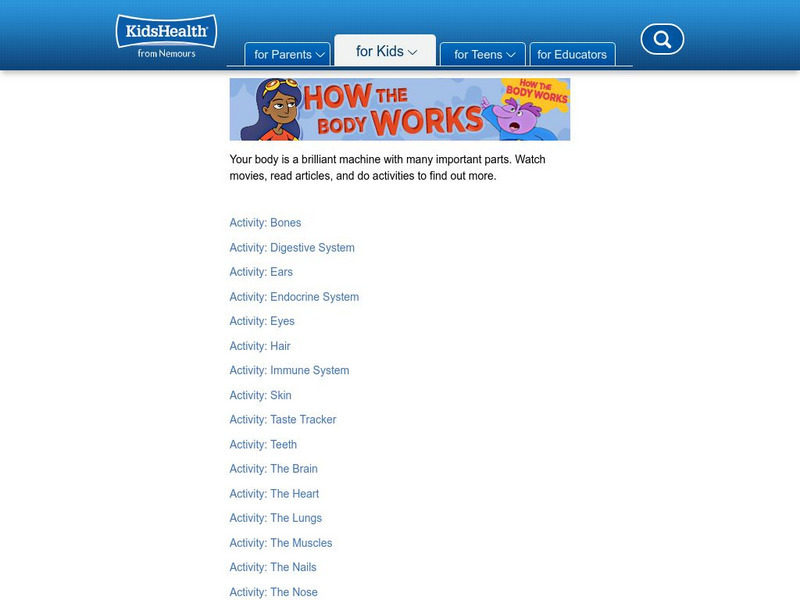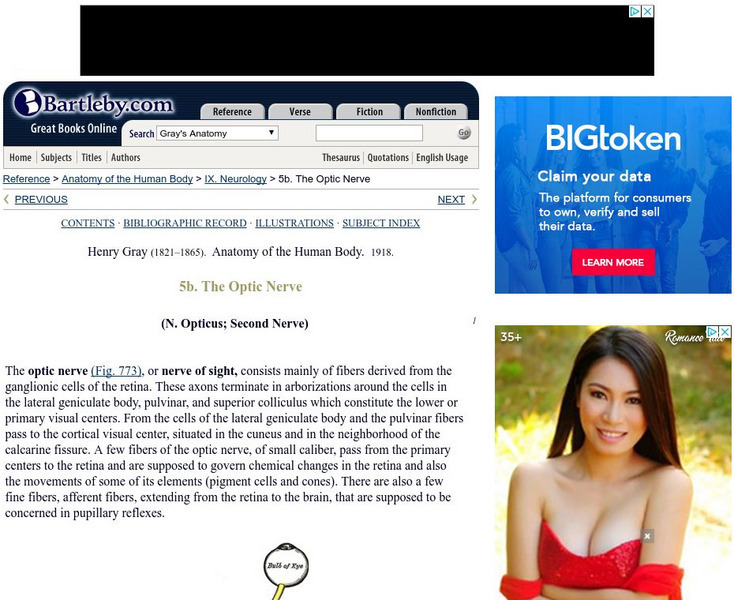Discovery Education
Discovery Education: The Eye: Structure and Function
In this lesson, students learn about the structure and function of the human eye and research how it compares to animal eyes. They will then choose an eye, write a description, and make an illustration of it, which other students will...
Physics Classroom
The Physics Classroom: Refraction/ray Model of Light: The Anatomy of the Eye
An introduction to the human eye as it relates to the physics ray model of light and image formation.
CK-12 Foundation
Ck 12: Life Science: 11.48 Eyes
Learn about the structure and function of the human eye.
TeachEngineering
Teach Engineering: Waves: The Three Color Mystery
Students are presented with a challenge question concerning color blindness and asked to use engineering principles to design devices to help people who are color blind. Using the legacy cycle as a model, this unit is comprised of five...
Scholastic
Scholastic Instructor: Open Your Eyes
This webpage is a great resource for elementary teachers who are looking for activities, lessons, facts, and experiments pertaining to the eye.
Other
American Friends Service Committee: Eyes Wide Open: Human Cost of the Iraq War
Traveling exhibit that reminds us of the human cost of the Iraq War. This exhibit memorializes those killed in the war with a field of shoes featuring a pair of boots for each U.S. military casualty. Also includes a memorial to Iraqi...
PBS
Pbs Learning Media: Life's Grand Design
Are nature's complex forms evidence of "intelligent design"? In this Evolution essay, biologist Kenneth Miller explains how the processes of evolution account for complex structures such as the human eye.
CK-12 Foundation
Ck 12: Life Science: Human Vision
[Free Registration/Login may be required to access all resource tools.] Sight, or vision, is the ability to see light. It depends on the eyes detecting light and forming images. It also depends on the brain making sense of the images, so...
National Health Museum
Access Excellence: The First Steps of Human Vision
Describes the contributions of scientists over hundreds of years leading to our current understanding of the eye and vision.
TeachEngineering
Teach Engineering: How Do Human Sensors Work?
This lesson highlights the similarities between human sensors and their engineering counterparts. Taking this approach enables students to view the human body as a system, that is, from the perspective of an engineer. Humans have...
TeachEngineering
Teach Engineering: The Grand Challenge: Simulating Human Vision
Students are introduced to the Robotics Peripheral Vision Grand Challenge question. They are asked to write journal responses to the question and brainstorm what information they require to answer the question. Their ideas are shared...
Other
Horshoe Crabs and Human Use
A well-written review of the link between Horseshoe Crabs and humans through history. Includes timelines of milestone events.
TED Talks
Ted: Ted Ed: A Plant's Eye View
What if human consciousness isn't the end-all be-all of Darwinism? What if we are all just pawns in corn's clever strategy game to rule the Earth? Author Michael Pollan asks us to see the world from a plant's-eye view. [17:29]
BiologyWise
Biology Wise: Genetic Mutations in Humans
Discusses common mutations that occur in the human population and describes the many different types of genetic mutations and their impact.
Florida State University
Florida State University: Vision and Color Perception
A high-level scientific explanation of the way the eye senses light and sees images and color. Excellent graphics help you visualize complex workings of the human eye.
Read Works
Read Works: The Human Body Your Vision
[Free Registration/Login Required] This informational text passage gives facts about human vision. This passage is a stand-alone curricular piece that reinforces essential reading skills and strategies and establishes scaffolding for...
Curated OER
Scale Model of Human Eye
A scale model of the human eye is shown. Information about the parts of the eye and the common defects that result from its malfunctioning.
National Humanities Center
National Humanities Center: Teacher Serve: History With Fire in Its Eye: An Introduction to Fire in America
This site from the National Humanities Center provides an interesting look at the history of fire in America, how we use it to control natural resources and how it controls us.
National Humanities Center
National Humanities Center: America in Class: America in the 1920s: Only Yesterday Year by Year
The National Humanities Center presents collections of primary resources compatible with the Common Core State Standards - historical documents, literary texts, and works of art - thematically organized with notes and discussion...
Institute for Dynamic Educational Advancement
Web Exhibits: Color Vision & Art
This online exhibit demonstrates how human vision works and has influenced Western art. It combines the biology of vision and art history. The exhibit focuses on the eye and its response to color and contrast while highlighting several...
Curated OER
Kids Health: A How the Body Works
This resource provides complete, mini-learning modules about different aspects of the human body. Click on the eyeball to focus your search.
Science Buddies
Science Buddies: Are Your Eyes Playing Tricks on You?
Yogi Berra said "You can observe a lot by just watching." In this human biology science fair project, you will observe how your eyes perceive color by watching afterimages. Afterimages are what you see after staring at an object for...
Smithsonian Institution
National Portrait Gallery: Eye Contact: Modern American Portrait Drawings
Portraits in the collections of the National Portrait Gallery can be seen and understood with excellent gallery notes that also survey the history of portraiture in American art leading up to the modern period.
Bartleby
Bartleby.com: The Optic Nerve
This site from Bartleby.com contains great information on the Optic nerve. Two picture/charts are provided along with a packed defintion on the subject. This definition was taken as an insert out of Henry Gray's Anatamony of the Human Body.
